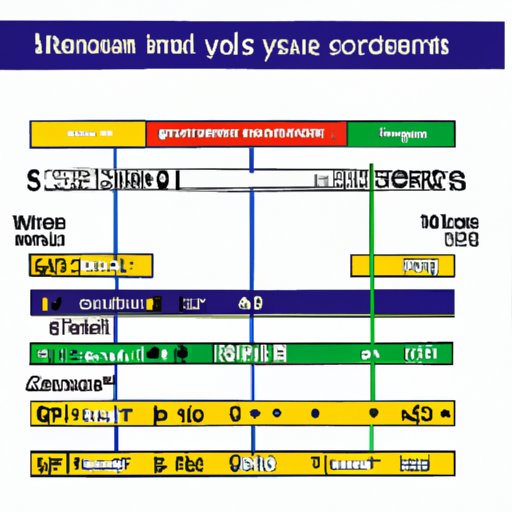Introduction
Understanding distance units is an important concept in fields ranging from science and engineering to everyday life. However, many people struggle with metric system conversions, and converting kilometers to centimeters is a common point of confusion. In this article, we will explain the basics of the metric system and provide a comprehensive guide on converting kilometers to centimeters.
Explaining the Metric System: How Many Centimeters are in a Kilometer?
The metric system, also known as the International System of Units (SI), was first introduced in France in the late 18th century. It was designed to provide a universal system of measurement that is based on multiples of ten, making it easy to use and understand.
The basic concepts of the metric system are based on the following units:
- Meter (m) for length
- Kilogram (kg) for mass/weight
- Second (s) for time
The metric system also includes a variety of prefixes that can be added to these basic units to create multiples of ten. For example:
- Kilo- means 1,000
- Centi- means 1/100, or 0.01
- Milli- means 1/1,000, or 0.001
Using these prefixes, we can create new units of measurement that are larger or smaller than the basic units. For example, a kilometer is equal to 1,000 meters, and a centimeter is equal to 0.01 meters.
Quick Math: Converting Kilometers to Centimeters Made Easy
To convert kilometers to centimeters, we can use the following conversion factors:
- 1 kilometer (km) = 100,000 centimeters (cm)
- 1 centimeter (cm) = 0.00001 kilometers (km)
For quick reference, we can use a table of common metric unit conversions that includes kilometers, meters, centimeters, and millimeters.
Conversion formula for kilometers to centimeters:
Number of kilometers x 100,000 = number of centimeters
Understanding Distance Units: From Kilometers to Centimeters
Kilometers and centimeters are both units of length in the metric system, but they are used in different contexts. Kilometers are typically used to measure longer distances, such as the distance between two cities, while centimeters are used to measure smaller distances, such as the length of a pencil.
Real world examples could include:
- Using kilometers to measure the distance between two cities
- Using centimeters to measure the length of a table or desk
How to Convert Kilometers to Centimeters: A Step-by-Step Guide
To convert kilometers to centimeters, follow these steps:
- Identify the number of kilometers you want to convert.
- Multiply that number by 100,000 to convert kilometers to centimeters.
- Round your answer to the nearest whole number or decimal point, depending on the level of accuracy required.
For example, let’s say we want to convert 5.5 kilometers to centimeters:
- Number of kilometers = 5.5
- 5.5 x 100,000 = 550,000
- Round to 550,000 centimeters
To simplify conversions, it can be helpful to memorize the conversion factor for kilometers to centimeters or create a reference chart for common conversions.
The Importance of Distance Conversion: Kilometers to Centimeters
Conversions are important in science, engineering, and everyday life. In science and engineering, it is often necessary to convert between different units of measurement to ensure accurate calculations and measurements. In everyday life, conversions are used to convert measurements on product labels, for example, from one unit to another that is more familiar.
Real-life examples of metric unit conversions include:
- Converting kilometers to miles for a road trip
- Converting Celsius to Fahrenheit for cooking recipes
- Converting meters to feet for home improvement projects
How Many Centimeters in a Kilometer? The Most Common Conversion Question Answered
The answer to the question, “How many centimeters are in a kilometer?” is 100,000. This is because a kilometer is equal to 1,000 meters, and a meter is equal to 100 centimeters, so 1 kilometer is equal to 100,000 centimeters.
People ask this question because they are often confused about the relationship between larger and smaller metric units of measurement. Understanding the conversion factor between different units can help simplify this confusion and make metric conversions more manageable.
Metric Unit Conversion: Discovering Centimeters in a Kilometer
Common mistakes when converting metric units include forgetting to multiply or divide by the correct conversion factor, using the wrong conversion factor, and not rounding to the appropriate level of accuracy. To master metric unit conversions, it can be helpful to practice with different conversion scenarios and to use reference guides or conversion calculators to check your answers.
Conclusion
The metric system is an important concept to understand, and conversions between different units of measurement can be confusing. By following the steps outlined in this guide, you can easily convert kilometers to centimeters and improve your understanding of the metric system. Remember to practice and check your work to master metric unit conversions and use them effectively in science, engineering, and everyday life.
